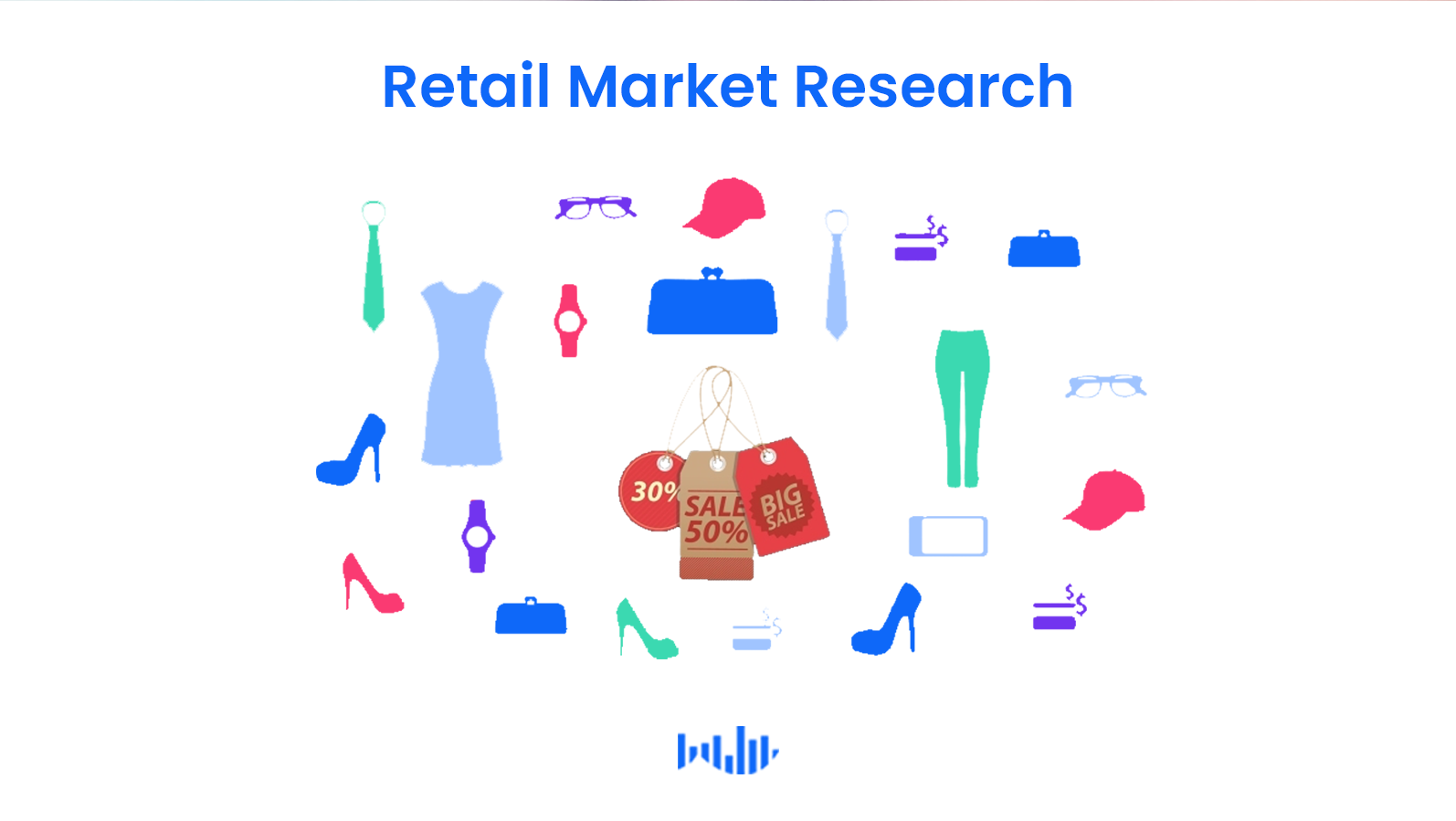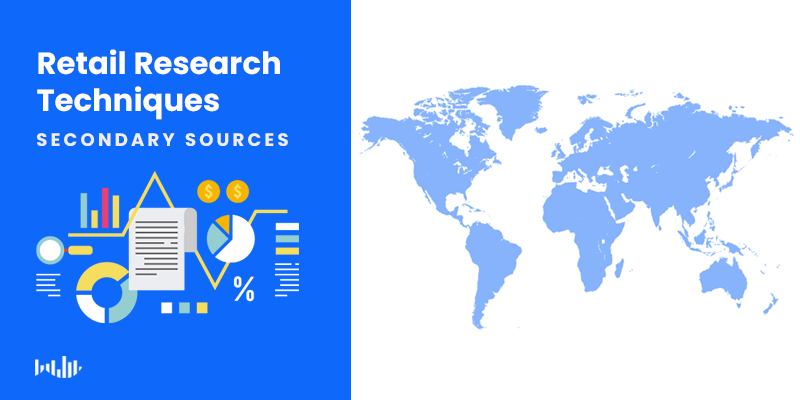How to Conduct Retail Market Research Like a Pro
 Whether you operate a brick-and-mortar, a click-and-mortar, or a pure-play brand, you need to conduct retail market research, that is, market research specific to the retail sector.
Whether you operate a brick-and-mortar, a click-and-mortar, or a pure-play brand, you need to conduct retail market research, that is, market research specific to the retail sector.
That is because, in today’s age of mass information circulating at speed, we exist in a market jungle, as market trends oscillate and customer expectations sway, while your competitors are becoming more adaptable.
To stay ahead and survive this market jungle, you need to get acclimated to performing the correct form of market research.
Let’s learn how to conduct market research for the retail sector.
The Makeup of Market Research
Market research, as we’ve covered aplenty, is a wide umbrella term that pertains to studying several facets of a particular market to gauge the profitability and success of your product or service.
This includes gathering information on the following:
- Trends in the sector, vertical and niche
- Your target market
- Segmentation within your target market
- Your competitors (tactics, launches, performance, etc.)
- The sector at large

It is made up of two sets of research: primary and secondary. The former deals with gathering research that you, as a business, conduct yourself. The latter involves consulting with information that has already been researched and is publicly available (not always for free).
Primary research requires using the following methods to collect information:
- Surveys on your target market and closely situated markets
- Interviews (in-person or over the phone)
- Consumer reviews
- Focus groups
- Sales records
- Employee feedback
Secondary research has a more encompassing set of documents and sources:
- Trends sites (Google Trends, Google Alerts)
- Keyword searching and SEO platforms
- Research agencies
- Statistics sites
- Market research sites
- Competitor sites
- Case studies
Techniques Particular to Retail Research

The above provides fundamental information about performing market research — in a general, all-purpose sense.
Since you would need to turn to both primary and secondary data throughout the market research process, you should be able to detect and distinguish these resource types, whenever you come upon them.
Above all, you need to know which exact platforms, websites and tools to use for collating information on the sector of retail. In market research, you move from the general to the specific fairly quickly, and you’ll need information specific to your vertical.
This is especially important if you serve a niche market.
Primary research techniques speak for themselves, as you would need to gather original insights and data from those mentioned above. Secondary sources particular to the retail sector, on the other hand, need to be laid out.
Secondary Research Sources for Retail
Here are a few secondary sources for market research on the retail vertical. Note that many of these platforms aren’t free, but their intel is indispensable.
- For understanding the retail industry: MarketResearch.com, specifically the Retailing Market Research Reports & Industry Analysis page, which links to a wide variety of internal research reports. These reports cover the many sub-sectors of the sweeping retail vertical, such as the clothing market, department stores and other related topics such as market analytics.
- For understanding customer personas: MakeMyPersona You should constantly be up to date on your buyer personas. This free tool from HubSpot generates personas; all you have to do is answer some questions about your ideal customers. The tool then creates a detailed document on your target market.
- For economic data in the retail sector: Business Dynamics Statistics (BDS) A division of the US Census Bureau, this program provides economic data on employment, job expansions/ contractions, number of establishments, number of startups and more. This platform supplies annual measures on different business subsectors.
- For competitor analysis: County Business Patterns (CBP) Another division of the US Census Bureau, this program presents subnational economic data based on various retail industries. This includes the number of establishments, employment, annual payroll and more to analyze economic changes over time.
- For understanding your customer base: Facebook Audience Insights If your business has a Facebook business page, this tool will provide demographic information, along with some behavioral insights into your followers. It shows you their age, location, income, employment type, spending behaviors and even lifestyle (Facebook’s category).
- For multipurpose research: Think with Google An all-in-one market research platform providing guides, data reports, infographics and content to reap insights on the retail industry and your target market. You can use specific tools to grow your store, find your audience and stay up to date with the latest research within your particular retail subsector.
- For keyword research, SEO and competitor analysis: SEMrush This platform offers over 30 tools to analyze 3.7 billion keywords and 4 trillion backlinks. It allows retailers to find new organic competitors, as well as those in Google AdWords and Bing ads, to analyze their competitors’ budgets, strategies, ad copy, display ads and keywords.
Wrapping Things Up
Retail is one of the most expansive verticals, as it can include virtually any business that sells products to consumers. It requires both primary and secondary research methods for a thorough analysis and interpretation.
Secondary research for the retail sector involves a distinct set of secondary sources for quality research campaigns. A successful research endeavor will allow you to provide meaningful products and experiences for your customers, communicate with them more productively and improve your standing within your submarket.
Although the above examples of secondary research are invaluable, there are many other online tools for your disposal. Social media, for example, is excellent for market research, as it can connect you with your customers to get their perspectives firsthand, along with their data.
Frequently asked questions
What is retail market research?
Retail market research is the process of gathering information about target customers and markets to determine or improve upon the success of a retail venture.
What types of primary research are useful in retail market research?
The most relevant types of primary research for the retail sector are surveys, consumer reviews, focus groups, feedback from employees, and sales reports.
How is secondary research performed?
Secondary research is performed by gathering and reviewing previously published information in order to gain insights to support a market research project.
How are buyer personas used in retail market research?
Buyer personas are a good way to define and understand the various customer segments that are likely to purchase from your retail store.
What information can Facebook Audience Insights provide about your retail business?
A shop’s Facebook business page can provide a wealth of information about its followers, including age, location, employment, income, spending behaviors, and lifestyle preferences.
Pollfish Marketing Team
Ready to Try Pollfish?
Create your survey with AI, target high-quality respondents starting at $0.95 per complete, and start getting results in just minutes in real-time. From running a simple product concept survey to managing a constant stream of trackers for dozens of clients in dozens of countries, we’ve got you.
